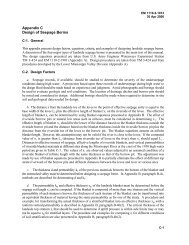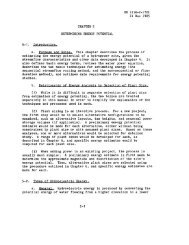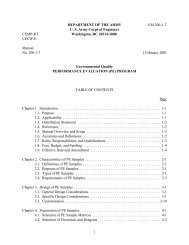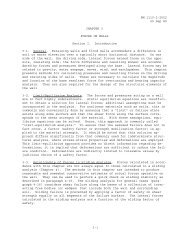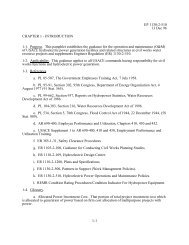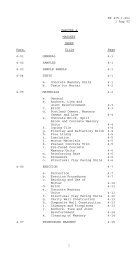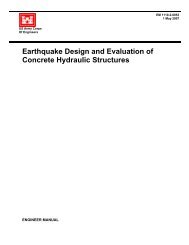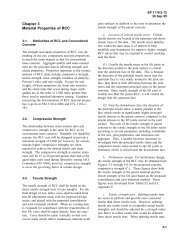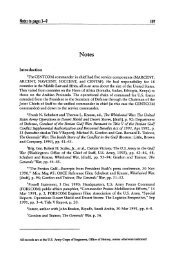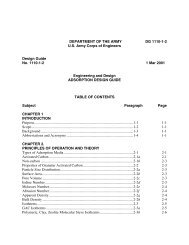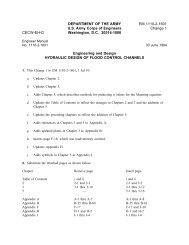em2901.chp:Corel VENTURA - Publications, US Army Corps of ...
em2901.chp:Corel VENTURA - Publications, US Army Corps of ...
em2901.chp:Corel VENTURA - Publications, US Army Corps of ...
You also want an ePaper? Increase the reach of your titles
YUMPU automatically turns print PDFs into web optimized ePapers that Google loves.
EM 1110-2-2702<br />
1 Jan 00<br />
2-2<br />
Vertical rib (typ)<br />
Girder<br />
Strut<br />
Downstream Vertical Truss<br />
Figure 2-2. Closeup view <strong>of</strong> tainter gate from downstream<br />
(1) The radial shape provides efficient transfer <strong>of</strong> hydrostatic loads through the trunnion.<br />
(2) A lower hoist capacity is required.<br />
(3) Tainter gates have a relatively fast operating speed and can be operated efficiently.<br />
(4) Side seals are used, so gate slots are not required. This reduces problems associated with cavitation,<br />
debris collection, and buildup <strong>of</strong> ice.<br />
(5) Tainter gate geometry provides favorable hydraulic discharge characteristics.<br />
b. Disadvantages include the following:<br />
(1) To accommodate location <strong>of</strong> the trunnion, the pier and foundation will likely be longer in the downstream<br />
direction than would be necessary for vertical gates. The hoist arrangement may result in taller piers especially<br />
when a wire rope hoist system is used. (Gates with hydraulic cylinder hoists generally require shorter piers than<br />
gates with wire rope hoists.) Larger piers increase cost due to more required concrete and will usually result in<br />
a less favorable seismic resistance due to greater height and mass.<br />
(2) End frame members may encroach on water passage. This is more critical with inclined end frames.




